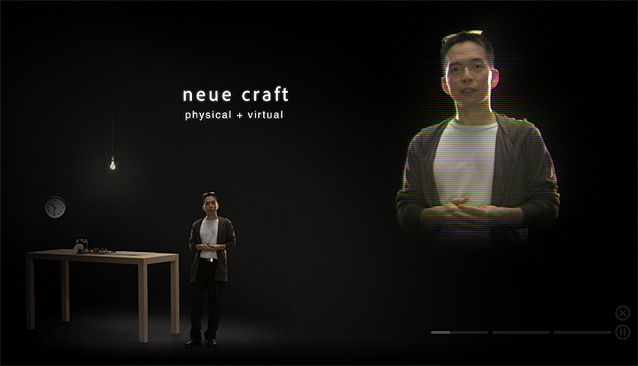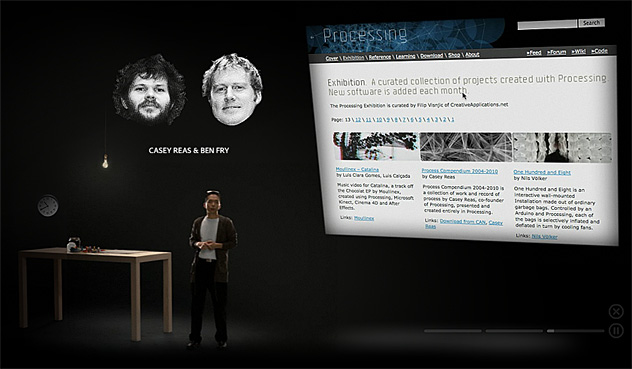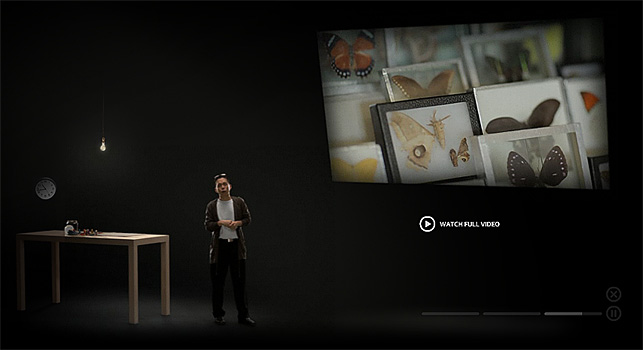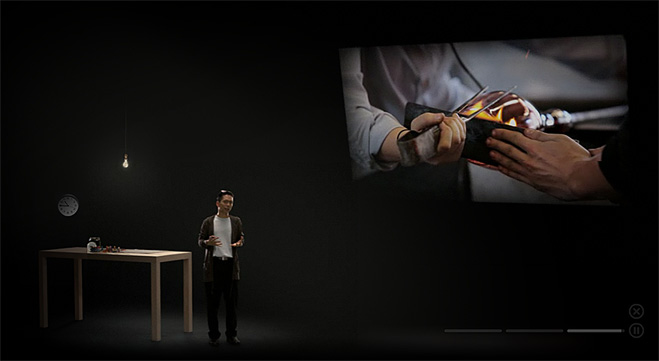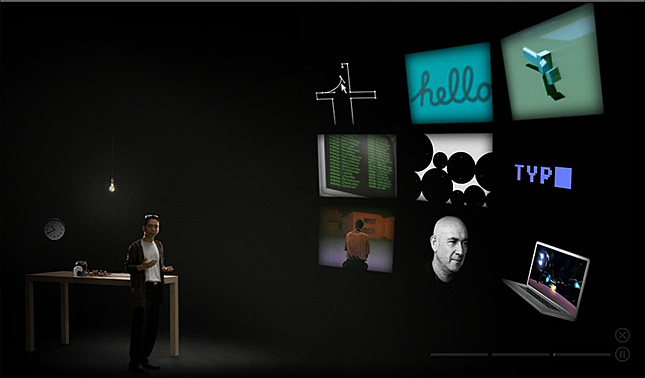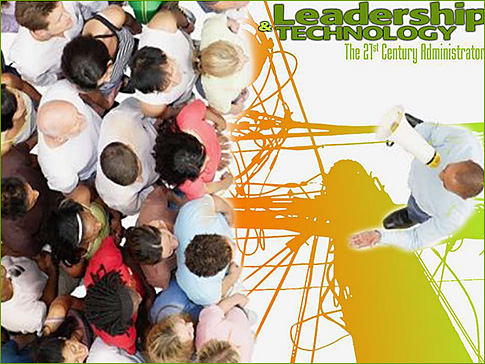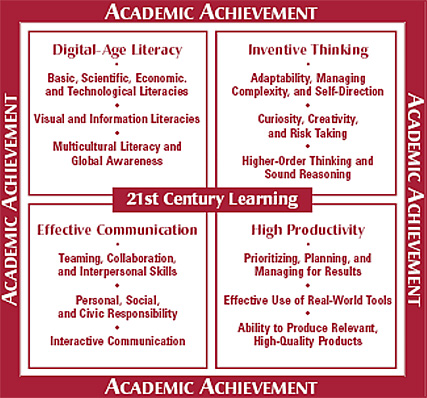Teaching in the Age of Participation — keynote address by Michelle Pacansky-Brock
Sample slides:




From DSC:
Again, a nice graphic reminding me of some potential sources of learning…of our learning ecosystems.
Originally saw this at Stephen Downes’ blog
Fluency in a technology accelerated age — from Shift to the Future by Brian Kuhn
From DSC:
The following images that Brian featured in his blog posting — images from Sylvia Rosenthal Tolisano (@langwitches) — remind me of some of the elements in our current learning ecosystems:
New Sony TV Ad: Television Redefined, Internet TV, 4/15/11 — from electrictv.com
New Samsung Smart TV Ad: Internet TV, 4/13/11 — from electrictv.com
[WATCH]: Interactive Video Conferencing at NCSSM
Daniel Christian:
A Vision of Our Future Learning Ecosystems
In the near future, as the computer, the television, the telephone (and more) continues to converge, we will most likely enjoy even more powerful capabilities to conveniently create and share our content as well as participate in a global learning ecosystem — whether that be from within our homes and/or from within our schools, colleges, universities and businesses throughout the world.
We will be teachers and students at the same time — even within the same hour — with online-based learning exchanges taking place all over the virtual and physical world. Subject Matter Experts (SME’s) — in the form of online-based tutors, instructors, teachers, and professors — will be available on demand. Even more powerful/accurate/helpful learning engines will be involved behind the scenes in delivering up personalized, customized learning — available 24x7x365. Cloud-based learner profiles may enter the equation as well.
The chances for creativity, innovation, and entrepreneurship that are coming will be mind-blowing! What employers will be looking for — and where they can look for it — may change as well.
What we know today as the “television” will most likely play a significant role in this learning ecosystem of the future. But it won’t be like the TV we’ve come to know. It will be much more interactive and will be aware of who is using it — and what that person is interested in learning about. Technologies/applications like Apple’s AirPlay will become more standard, allowing a person to move from device to device without missing a beat. Transmedia storytellers will thrive in this environment!
Much of the professionally done content will be created by teams of specialists, including the publishers of educational content, and the in-house teams of specialists within colleges, universities, and corporations around the globe. Perhaps consortiums of colleges/universities will each contribute some of the content — more readily accepting previous coursework that was delivered via their consortium’s membership.
An additional thought regarding higher education and K-12 and their Smart Classrooms/Spaces:
For input devices…
The “chalkboards” of the future may be transparent, or they may be on top of a drawing board-sized table or they may be tablet-based. But whatever form they take and whatever is displayed upon them, the ability to annotate will be there; with the resulting graphics saved and instantly distributed. (Eventually, we may get to voice-controlled Smart Classrooms, but we have a ways to go in that area…)
Below are some of the graphics that capture a bit of what I’m seeing in my mind…and in our futures.
Alternatively available as a PowerPoint Presentation (audio forthcoming in a future version)










— from Daniel S. Christian | April 2011
Addendum on 4-14-11:
Swedish Online Store Features Live, Interactive Salespeople [VIDEO] — from Mashable.com
Excerpt:
Swedish telecom company 3 Sweden has bridged the gap between Internet commerce and brick and mortar with 3LiveShop. The new site features employees interacting with customers, live, over videoscreens. As the video above shows, the Chatroulette-like site was made possible with custom-built touchscreens that look like they’re right out of The Minority Report. Using the screens, the online salespeople are able to bring up images of phones the company sells and field questions about them.
Questions/reflections from DSC:
If this does turn out to be the case:
Adobe Museum of Digital Media, A lecture by John Maeda
From DSC:
If online courses could feature content done this well…wow! Incredibly well done. Engaging. Professsional. Cross-disciplinary. Multimedia-based. Creative. Innovative. Features a real craftsman at his work. The Forthcoming Walmart of Education will feature content at this level…blowing away most of the competition.
This is also true for materials like the item below!
MBA Curriculum Changes: Wharton, Yale, and Stanford Lead the Pack — from knewton.com by Christina Yu
Excerpt (citing article from a U.S. News article):
“Rather than consider pre-digested summaries of company situations, students tackle ‘raw cases’ packed with original data. Instead of being presented with an income statement, for example, they must mine the considerably bulkier annual filing to the Securities and Exchange Commission for data. The raw cases ‘push us to understand,’ says second-year Yale student Jason Hill. ‘They purposely put in more material than you could ever look at, but you have to learn where to look.’” (emphasis DSC)
From DSC:
I found this to be a good, interesting post. I just had a couple of thoughts that I wanted to throw out there re: it.
In looking at trends from an 80,000-foot level, I’d vote for MBA programs integrating much more of the tech-know-how — and/or appreciation of what technologies can bring to the table — as well as teaching grad students about some of the tools/technologies that are emerging these days (and I’d bet that the leaders/schools mentioned in this article are already doing this) .
I remember an instructor years ago — at SFSU’s MSP Program — saying that bots and agents will be the key to making decisions in the future, as there will be too much information for a person to sift through. The streams of content need to be tapped — but in efficient ways. So perhaps the logical step here is for MBA students to learn what bots/agents are, how to use them, and what their applications might be in making business/strategic decisions.
The most successful organizations of the future will be well-versed in technologies and what the applications/benefits of these technologies are. My bet? If you don’t have a technologist at the power table of your organization, the outlook doesn’t look very bright for your organization in terms of surviving and thriving in the future. Organizations will also need to be willing to take risks and move forward without having a full cost-benefit analysis done — as many times these don’t work well or are not even possible when implementing tech-based endeavors/visions.
Also relevant here:
From DSC:
After looking at some items concerning Connectivism*, I’ve been reflecting upon the following questions:
Thinking of Gonzalez (2004; as cited in Siemens (2005)) description of the challenges of rapidly diminishing knowledge life:
“One of the most persuasive factors is the shrinking half-life of knowledge. The “half-life of knowledge” is the time span from when knowledge is gained to when it becomes obsolete. Half of what is known today was not known 10 years ago. The amount of knowledge in the world has doubled in the past 10 years and is doubling every 18 months according to the American Society of Training and Documentation (ASTD). To combat the shrinking half-life of knowledge, organizations have been forced to develop new methods of deploying instruction.”
Stephen Downes addresses this and points to a possible solution to this phenomenon in his presentation from 3/15/11 entitled “Educational Projection: Supporting Distributed Learning Online.”
Excerpt/slides:
.
I need to put more thought into this, but wanted to throw this question out there…more later…
* From DSC: Some of the items I looked at regarding Connectivism — some directly related, others indirectly-related — were:
Siemens, G. (2005). Connectivism: A learning theory for the digital age. Retrieved from http://www.elearnspace.org/Articles/connectivism.htm.
Downes, S. (2005). An introduction to connective knowledge. Retrieved from http://www. downes. ca/post/33034. Downes noted that this was published in Hug, Theo (ed. ) (2007): Media, knowledge & education – exploring new spaces, relations and dynamics in digital media ecologies. Proceedings of the International Conference held on June 25-26, 2007. November 27, 2007.
Kop, R. & Hill, A. (2008). Connectivism: Learning theory of the future or vestige of the past? International Review of Research in Open and Distance Learning, v9 n3 p1-13 Oct 2008.
Tracey, R. (2009). Instructivism, constructivism or connectivism? Training & Development in Australia, December, 2009. p08-09, 2p. Retrieved from EBSCOhost. ISSN 0310-4664.
Kerr, B. (2007). A challenge to connectivism. Retrieved at http://learningevolves. wikispaces. com/kerr.
Sims, R. (2008). Rethinking (e)learning: A manifesto for connected generations. Distance Education Vol. 29, No. 2, August 2008, 153–164. ISSN 0158-7919 print/ISSN 1475-0198 online. DOI: 10. 1080/01587910802154954
Lisa Dawley. (2009). Social network knowledge construction: emerging virtual world pedagogy. On the Horizon, 17(2), 109-121. Retrieved from ProQuest Education Journals. (Document ID: 1880656431).
Hargadon, S. (2011). Ugh. Classic politics now extends to social networking in education. Retrieved from http://www. stevehargadon. com/2011/03/ugh-classic-politics-now-extends-to. html.
Cross, J. (2001). Crowd-inspired innovation. Retrieved from http://www.internettime.com/2011/03/crowd-inspired-innovation.
Rogers-Estable, M.. (2009). Web 2.0 and distance education: Tools and techniques. Distance Learning, 6(4), 55-60. Retrieved from ProQuest Education Journals. (Document ID: 2017059921).
Marrotte-Newman, S.. (2009). Why virtual schools exist and understanding their culture. Distance Learning, 6(4), 31-35. Retrieved from ProQuest Education Journals. (Document ID: 2017059881).
Hilton, J., Graham, C., Rich, P., & Wiley, D. (2010). Using online technologies to extend a classroom to learners at a distance. Distance Education, 31(1), 77-92. Retrieved from ProQuest Education Journals. (Document ID: 2074810921).
Attwell, G. (2010). Personal learning environments and Vygotsky. Retrieved from http://www.pontydysgu.org/2010/04/personal-learning-environments-and-vygotsky.
.
What is Kuggaa?
Kuggaa is a global mobile ecosystem. Kuggaa’s revolutionary ‘cloud’ based service allows its subscribers the ability to socialize, share, sync, create, edit, play, and enjoy access to their favorite content across many different mobile ecosystems at anytime from anywhere.
What Problem does Kuggaa Solve?
Device eco systems do not interoperate with competing eco systems, depriving the user of a truly global computing experience across a wide range of devices. Eco systems today are defined as device and platform specific environments that cannot be shared with other competing mobile eco systems. Smartphone and tablet owners’ are beginning to demand new ‘experiences’ in eco system functionality. Mobile computing must enable cross eco system compatibility as users buy more competing mobile devices.
What is the Solution to the Problem?
Kuggaa creates cross device integrated ‘experiences’ for consumers in a new product category dubbed ‘Global Mobile eco system.’ Kuggaa defines a global mobile ecosystem as a platform that integrates into diverse mobile devices unique shared experiences, services, relevant content, user generated media, fun apps, as well as inclusion of legacy computing platforms like the at anytime from anywhere. Kuggaa users can share, create, watch, listen, and communicate on different Tablets, smart phones, internet TV’s, and PC’s without losing the current eco systems they have adopted on their captive mobile devices.
Company Information:
Kuggaa is an Nevada Company based in Las Vegas.
.
.
From DSC:
How will these types of technologies affect what we can do with K-12 education/higher education/workplace training and development? I’d say they will open up a world of new applications and opportunities for those who are ready to innovate; and these types of technologies will move the “Forthcoming Walmart of Education” along.
Above item from:
Below graphics from Wenger, White and Smith’s Digital Habitats blog — specifically from their posting entitled, “Putting our diagrams to work”
.
.
.
.

